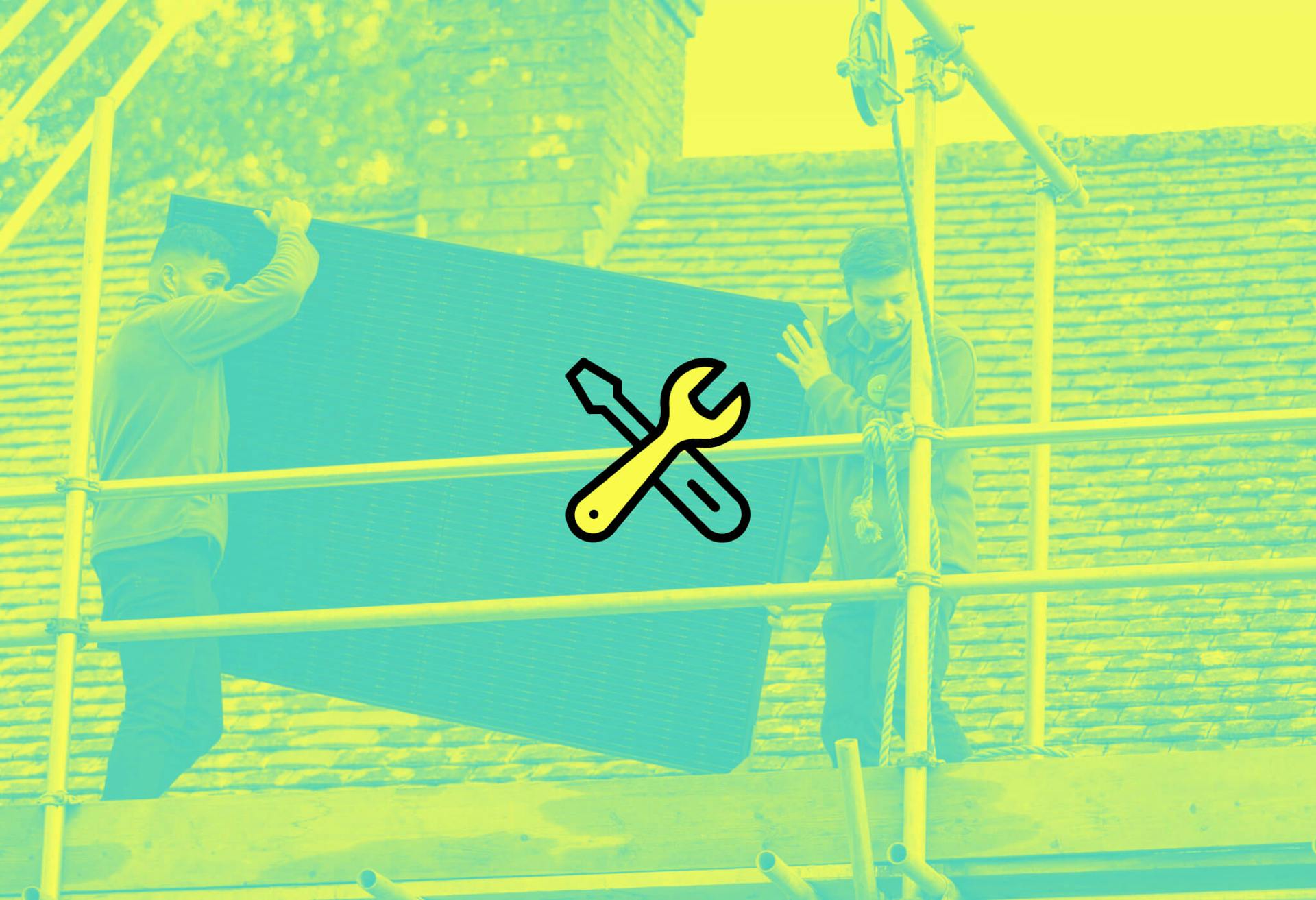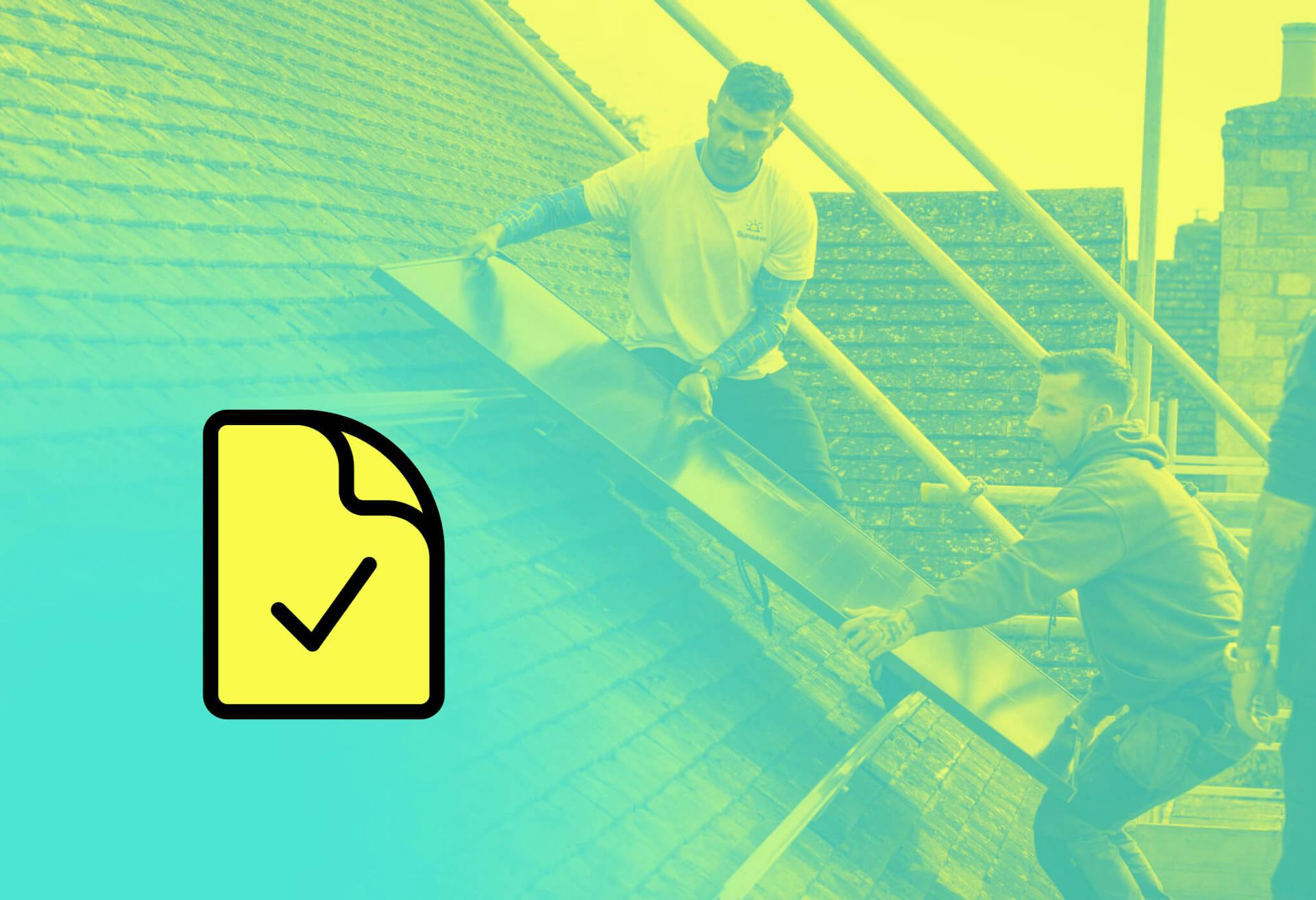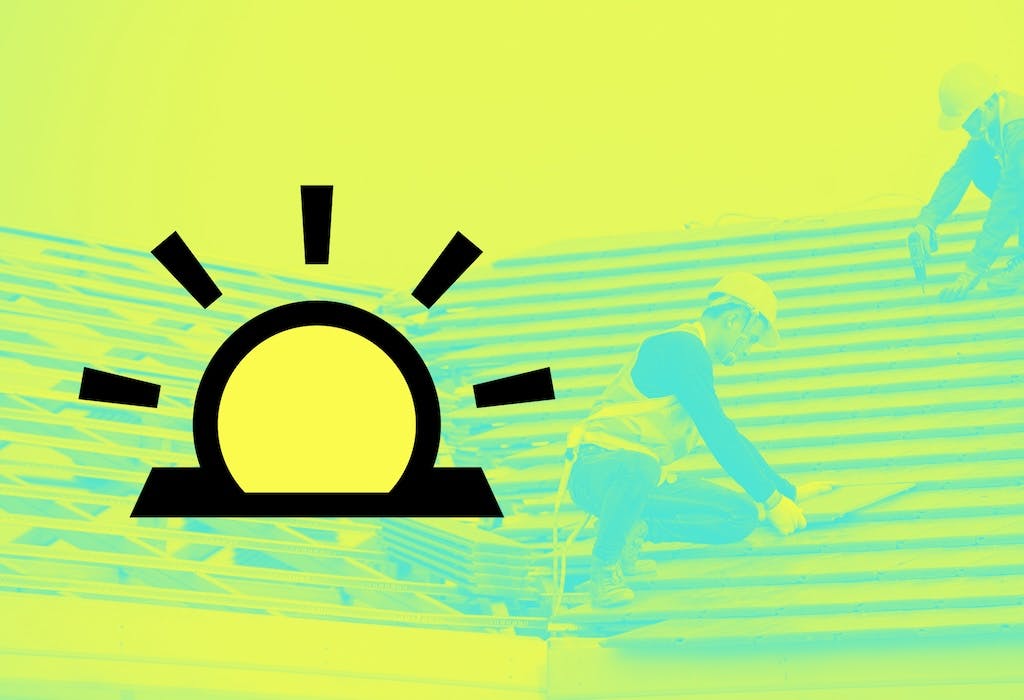- Solar advice hub
- Installation
- Is my roof suitable for solar panels?
Is my roof suitable for solar panels?
Here's how an installer will decide if your roof is suitable for solar panels, including assessing its direction, usable space, and loft.


Why you can trust our content
We know that the solar industry is full of misinformation, but we only use reliable sources, including:
- Our experienced solar experts, installers and system designers
- Our own database of solar & battery system designs
- Authoritative bodies like MCS and the UK government




Roof suitability for solar: at a glance
Before you get solar panels, you’ll want to know whether your roof is ready and able to support them.
Thankfully, most residential roofs in the UK are strong enough and pitched at a decent enough angle – and most other obstacles can be navigated.
In this guide, we’ll run through the various attributes that can define a roof’s suitability for solar panels, including its direction, usable space, and loft – though you should leave the final decision up to a qualified professional.
If you would like to see how much you could save by getting a solar & battery system at no upfront cost, just answer a few quick questions below and we’ll provide an estimate.
How to tell if your roof is suitable for solar panels
There are several questions you can ask in order to gain an initial idea of whether your roof might be suitable for solar panels.
Ultimately, you should leave the decision up to a certified installer, as they’ll be able to assess the specific characteristics of your roof, spot any issues, and potentially solve them.
They’ll also be able to tell you whether a solar panel system would be unsafe or financially unwise on your roof.
But finding out the answers to the following questions will give you some insight about how effective a solar panel system would be on your roof.
- Does your roof face the right direction?
- Does your roof have enough space?
- Does your roof experience any shading?
- Is your roof at the correct angle?
- Do you have any lower roofs?
- Does your roof have a loft space underneath it?
- Does your loft have enough room?
- Does your loft have spray foam insulation?
- What type of tiles does your roof have?
Does your roof face the right direction?
Solar panels can be a worthwhile investment whatever direction they face, but some directions are more suitable than others.
A south-facing roof is the ideal scenario in the UK, followed by a roof that faces east or west.
Roofs that face north don’t always have the best reputation in this department, but technological advances have made it viable for many homeowners to profit from a north-facing solar panel system (particularly if it’s north-east or north-west facing).
And the further south your home is, the less it matters if your roof faces north.
Verified expertI’ve installed a lot of east-west solar panel arrays in the past; they’re pretty popular. These systems aren’t as effective as south-facing ones, but they still produce a lot. East-facing arrays perform really well as the sun rises in the morning, whereas west-facing arrays hit peak performance after noon.
Tom Brehme
Technical Manager
Tom has worked in residential solar installation for more than a decade, and is a fully qualified electrician.
Does your roof have enough space?
Your roof will need to be large enough to fit a suitable number of solar panels, as there’s rarely much point putting just two or three panels up there.
The average solar panel takes up 2m², and your installer should leave around 40cm on each side of the array, as well as 3cm between every panel (to learn more, check out our guide to solar panel sizes).
In addition, your installer will need to leave space around any extra objects on your roof, such as a chimney, skylight, or vent pipe. Households with all three will need another 0.81m² of roof space.
So if you’re planning to install a 3 kilowatt-peak (kWp) system – for example – you’ll need around 23m² of roof space, as that would be about seven or eight panels.
Or if you’re considering getting a larger array, you’ll naturally require more roof space. For example, a 5.2kWp array would need about 38m².
And if you have a dormer on your roof, none of the space it takes up counts as usable space, as it has a flat roof (which we’ll go into more detail about below).

Does your roof experience any shading?
The most common obstacle for prospective solar panel owners is shading – after all, the less sunlight your system receives, the less electricity it can produce.
If trees are the issue, it’s a good idea to work out how long they spend casting shade over your roof each day. It’s best to leave this to a professional installer though, as they’ll be able to accurately assess this for you while designing your system.
A short amount of time in the shade may not be a problem at all – and if they’re more obstructive, consider whether you get them trimmed or cut down.
Buildings that cast shade on your roof are more difficult to deal with.
Make sure you also look at your roof itself, since objects like chimneys, vent pipes, flue pipes, gable features, and dormers can all cause shading.
Thankfully, if your rooftop experiences a significant level of shading, your installer should be able to use optimisers or microinverters to solve the issue.
Most solar panels also have in-built technology called bypass diodes that deal with shading to a decent extent.
Verified expertIf we identify significant shade on a rooftop when we’re designing a system, we’ll consider how this impacts the expected output and energy bill savings. If it makes a big difference, we’ll think about potential solutions (e.g. microinverters), and weigh up the additional cost against the benefits.
Tom Brehme
Technical Manager at Sunsave
Tom has worked in residential solar installation for more than a decade, and is a fully qualified electrician.
Is your roof at the correct angle?
The ideal angle for rooftop solar panels in the UK is around 40°.
Most roofs are in this range, which allows the panels they host to capture as much sunlight as possible.
Many households that have roofs with a slightly higher or lower angle can also save plenty on their electricity bills, but flat roofs – including those on dormers – are more problematic.
Installers shouldn’t drill into a flat roof, as it may cause leaks when rain falls, so they’ll look at ballasting your panels instead – but ballasts weigh 80kg per panel, which makes a system about five times heavier.
The great majority of UK roofs can support the typical weight of a solar array, which is around 200kg, but can’t necessarily hold a tonne.
Solar panels on a flat roof can also cast shade on each other, meaning they need to be spaced out more – which also reduces the number of panels you can have on your roof.
Do you have any lower roofs?
Lower roofs, such as those on a conservatory or extension, can make it much more difficult to put up the scaffolding you need to install rooftop panels.
A lower roof can stop your scaffolding’s feet from reaching the ground – and you can’t install scaffolding on the lower roof, as it won’t be strong enough.
Unfortunately, you also can’t get around the issue by just putting the scaffolding on a different side of the house.
This would require installers to carry the solar panels across the roof, which would be dangerous for the panels, your property, and the installers themselves.
One of the main reasons why rooftop jobs require scaffolding is that people will sometimes drop tools and equipment, in which case scaffolding is there to stop items from falling all the way to the ground.
Scaffolding also needs to be as close as possible to the installation site to give engineers an effective ‘staging’ or ‘working’ area – somewhere safe to organise and store devices, study plans, and assemble equipment.
If you have a lower roof, it’s not always a deal-breaker, but it will raise the price. The more complicated an installation is, the more expensive it is.
A good installer will typically get around lower roof issues by fixing scaffolding to the side of the property with drill ties or hooks, in the same way builders would attach a balcony to your home.
Once your solar panels have been installed and worked properly for a period of time, your installers will remove the scaffolding – but they’ll leave the drill hooks or ties, just in case they’re needed again.
Does your roof have a loft space underneath it?
It’s much easier to get rooftop solar panels installed if you have a loft space.
This way, installers can look at the underside of your roof beforehand to check its structure and pinpoint where the rafters are, then look afterwards to make sure the felt isn’t torn and the bolts have gone straight into the rafters.
If you have a loft conversion, it’ll ideally have an eaves hatch that’ll give installers a view of the structure, rafters, and felt. If you don’t have an eaves hatch, a blueprint or diagram of your roof – or, in rare cases, a series of photos – may also be sufficient.
Households that don’t have either may have to pay for an invasive survey that involves professionals cutting into the loft’s ceiling.
However, if you have a profiled or vaulted loft ceiling which completely covers the rafters, this can make installation tricky. Engineers won’t be able to conduct post-installation checks, which means there could be expensive, long-term damage.

Does your loft have enough room?
If you and your installer agree on an internal cable run, they’ll feed your solar panels’ DC cable through a fold in the roof’s felt membrane, and into your loft.
In most cases, they’ll then thread the cabling through the house to your battery and inverter’s location, whether it’s under the stairs, in your garage, or outside.
A good installer will put these cables in trunking – a plastic enclosure that keeps them neat and protected – and hide cabling from sight where possible, for instance by running it through an airing cupboard or the corner of a room.
Your installer may also set up your battery and inverter in the loft, though only if it has a large enough hatch, enough floor space for an inverter, and a gable end wall where the battery can be mounted.
If your loft fulfils these requirements, the installer will consolidate the cabling and connect it to the inverter.
Does your loft have spray foam insulation?
If your loft has spray foam insulation, it can make installing solar panels difficult.
When your installer gets on the roof, they’ll need to lift up some tiles to get to the rafters – but if there’s spray foam on the underside, this may prove impossible.
The tiles can also break as they’re lifted up, and the spray foam can crack and crumble into your loft, all of which could create an expensive mess that requires you to find tradespeople to replace tiles and re-apply spray foam.
And even after the installation is complete and the repairs have been made, there’s a high chance of water ingress, which can lead to many more complications.
For these reasons, some solar installers will point-blank refuse to work on a property which has spray foam insulation under the roof.
What type of tiles does your roof have?
Some roof tiles make solar panel installations a lot trickier. Your installer will likely still be able to go ahead, but it might take longer and be more expensive.
If your tiles have a consistent size and shape – for instance, if they’re concrete or clay tiles – then you’re all set.
However, some roofs come with tiles made of materials like Yorkshire stone or Cumbrian slate, which vary in size, depth, and weight.
These tiles are usually bigger and heavier than concrete and clay tiles, and overlap with each other, making them difficult to lift. As a result, they require an installer to take more time and use additional mounting equipment.
This can cost more – but it’s worth it to emerge with an undamaged roof.
Summary
As long as your roof is pitched, has enough unshaded space, and doesn’t contain spray foam insulation underneath, it should be suitable for solar panels.
The large majority of UK roofs are more than capable of supporting solar panels for as long as you need them to.
The best way to ensure your installation goes smoothly and leaves your roof unblemished is to get an accredited, certified, well-reviewed installer like Sunsave.
If you’re wondering how much a properly installed solar & battery system could save you, answer a few questions below and we’ll provide you with an estimate.
Roof suitability for solar: FAQs
Related articles

How are solar panels installed?
Read full story
Planning permission for solar panels: an expert guide
Read full story
Making changes to your roof during a Sunsave Plus subscription
Read full story
Rent-a-roof solar panels: what went wrong?
Read full story
Written byJosh Jackman
Josh has written about the rapid rise of home solar for the past six years. His data-driven work has been featured in United Nations and World Health Organisation documents, as well as publications including The Eco Experts, Financial Times, The Independent, The Telegraph, The Times, and The Sun. Josh has also been interviewed as a renewables expert on BBC One’s Rip-Off Britain, ITV1’s Tonight show, and BBC Radio 4 and 5.
